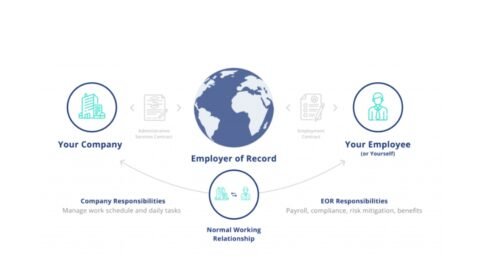Table of Contents
- Introduction
- Why State-Mandated Retirement Plans Matter
- Understanding Different State Requirements
- Tips for Transitioning Smoothly
- Common Challenges and Solutions
- Benefits for Employers and Employees
- Conclusion
Introduction
In today’s evolving work environment, the importance of financial security is increasingly recognized. Many states are stepping up to the plate by enacting laws requiring employers to offer their employees retirement plans. These mandatory retirement policies aim to ensure workers have access to necessary retirement savings. It is crucial for employers to understand and comply with these mandates to avoid penalties and support their employees’ financial well-being.
However, understanding and adhering to state-specific retirement requirements can take time and effort. This article aims to demystify the process by providing detailed insights and actionable tips. Employers can ensure a smooth transition by employing smart strategies to benefit the business and its employees.
Why State-Mandated Retirement Plans Matter
State-mandated retirement plans, such as California’s CalSavers and Oregon’s OregonSaves, have emerged as a vital aspect of the modern employment landscape. These plans are specifically crafted to ensure that all individuals in the workforce, irrespective of their employment status, have the opportunity to participate in retirement savings programs. It is particularly noteworthy, considering many Americans must save more for retirement. As a result, adherence to these regulations is not just a legal necessity; it represents a significant stride toward fostering a financially stable society.
From the employers’ perspective, these mandatory plans provide a platform to demonstrate their dedication to the welfare of their employees. Access to retirement plans can substantially elevate job satisfaction, bolster morale, and improve employee retention rates. When employees are confident about their financial futures, they are more inclined to stay committed to their employers, nurturing a positive and harmonious workplace environment.
Understanding Different State Requirements
It’s essential to be aware that the landscape of state-mandated retirement plans is complex and constantly evolving. Each state has its unique set of regulations, deadlines, and eligibility criteria for these plans. For example, California’s CalSavers program has specific enrollment and contribution requirements that differ from OregonSaves’s. Employers must navigate and understand these differences to ensure compliance and avoid potential penalties.
Employers must stay current with the specific mandates that apply to their business. Resources like the Pew Trusts report provide in-depth insights into the various state programs, offering valuable information about these retirement plans’ benefits and operational intricacies. Employers can better understand their obligations and maximize opportunities by staying informed with such resources.
Tips for Transitioning Smoothly
- Identify State-Specific Requirements: Begin by thoroughly understanding the specific requirements of the state mandates that apply to your business. Each state may have distinct criteria for eligibility, contribution limits, and deadlines. Documentation and official state websites are excellent starting points for gathering this information.
- Seek Guidance: Navigating the complexities of retirement mandates can be challenging. Financial advisors or consultants specializing in retirement plans can offer invaluable guidance. They can help you interpret the requirements accurately and suggest the best course of action for compliance.
- Communicate Clearly: Transparent and effective communication with your employees is critical. Ensure that your employees are informed about the changes, how they affect them, and the benefits they can gain. Clear communication can also alleviate employees’ concerns regarding their earnings and contributions.
- Utilize Professional Services: Handling the administrative burden in-house can be time-consuming and prone to errors. Consider leveraging professional services that specialize in managing retirement plans. These services can take on the administrative workload and ensure all processes align with state requirements.
Common Challenges and Solutions
Navigating through new regulations can present numerous complexities. One of the primary challenges involves grappling with intricate legal requirements. It can be daunting for employers, but seeking professional guidance and utilizing accessible resources can help break down these complex regulations into more manageable terms. Moreover, automated payroll systems can significantly alleviate the administrative workload by ensuring precise deductions and contributions.
In addition, encouraging employee participation can be another obstacle. Some employees might need help to allocate some of their income toward retirement savings. To address this, implementing comprehensive educational programs that emphasize the long-term benefits of retirement savings is vital. Regular workshops and informational sessions can go a long way in demystifying these plans and underlining their significance in securing a comfortable future.
Benefits for Employers and Employees
State-mandated retirement plans offer a range of valuable benefits for both employers and employees. These plans can be crucial in enhancing employee satisfaction and retention for employers. By providing such benefits, employers demonstrate a genuine concern for their employees’ financial well-being, fostering a more motivated and loyal workforce. Additionally, state-mandated retirement plans contribute to a positive work environment and can help attract top talent to the organization. Importantly, these plans can also lead to significant cost savings for employers, making them a smart financial move.
For employees, state-mandated retirement plans streamline the process of preparing for retirement. Automatic enrollment ensures that employees take advantage of the opportunity to build their retirement savings. Studies show that employees with access to workplace retirement plans are more likely to save and feel more secure about their financial future. This increased financial security can lead to improved employee morale and reduced stress related to retirement planning, ultimately contributing to a more productive and content workforce. As an employer, providing these plans is a tangible way to show your employees that you care about their future and value their contributions to the company.
Conclusion:
Employers can effectively oversee state-mandated retirement plans by proactively analyzing the state’s requirements and regulations. By leveraging intelligent and carefully crafted strategies, they can ensure compliance with laws while optimizing the retirement benefits offered to their employees. Implementing these programs not only has the potential to improve financial security for both businesses and employees but also serves as a means of promoting a more robust and dedicated workforce, fostering long-term employee engagement and resilience.





